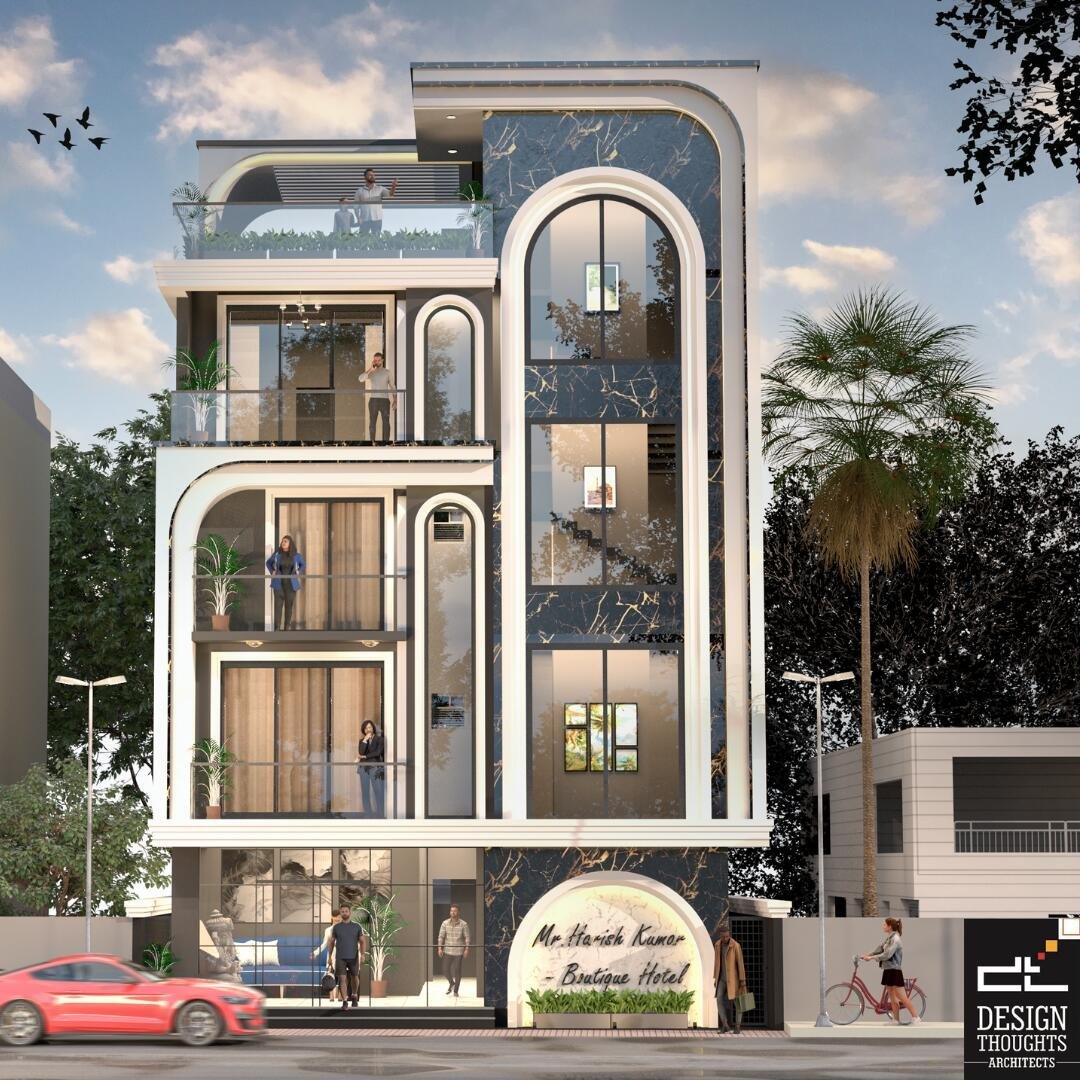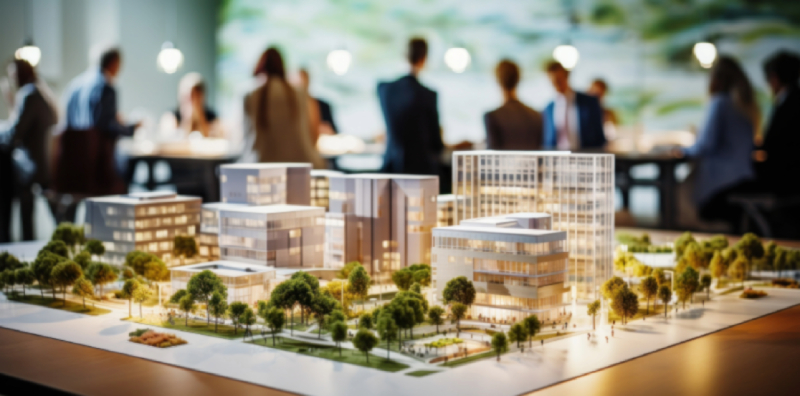Discover the Cutting-edge Services Provided by Commercial Architects for Your Next Project
Commercial architects play a crucial function in forming the built atmosphere. They mix functionality with visual allure, producing spaces that reverberate with brand identification. These experts utilize innovative style remedies, lasting techniques, and progressed innovations to improve customer experiences. Their joint approach guarantees positioning with customer visions and operational demands. The level of their services usually prolongs beyond design. The next steps in understanding how these architects navigate complex project needs might surprise you.
Comprehending the Function of Commercial Architects
The duty of business architects might vary depending on the particular task, their key feature rotates around creating practical and visually appealing spaces for businesses. These specialists are entrusted with recognizing the one-of-a-kind needs of each customer, whether it be a store, office complex, or industrial facility. They conduct extensive website evaluations and work together with stakeholders to guarantee that the layout straightens with business objectives and brand name identity.Commercial architects likewise browse different regulatory needs, protecting conformity with zoning legislations and building regulations. Their knowledge encompasses producing lasting designs that advertise energy performance and environmental duty. Furthermore, they take care of the job's timeline and spending plan, coordinating with professionals and designers throughout the construction procedure. By blending creativity with technical understanding, business architects play a vital role in changing conceptual concepts into concrete facts, eventually boosting the performance and allure of industrial rooms.
Innovative Design Solutions for One-of-a-kind Spaces
As industrial rooms increasingly demand diversity to stand out in open markets, ingenious design options have actually become important for architects. These experts leverage their imagination and technological proficiency to craft one-of-a-kind environments that reflect brand name identification and boost individual experience. By integrating sophisticated technology and products, commercial architects can transform average spaces into enchanting locations that engage clients and motivate employees.Architects utilize different approaches, such as flexible reuse, which revitalizes existing structures while preserving their historical importance. They additionally discover unusual formats and multifunctional rooms that deal with diverse needs, making sure versatility for future growth.Furthermore, the unification of biophilic layout-- bringing nature indoors-- creates inviting environments that advertise health - commercial architects. This attention to detail in ingenious style not just addresses visual concerns but also fosters area and cooperation. Eventually, these tailored solutions permit services to grow in an ever-evolving landscape, establishing them aside from rivals
Sustainable Architecture Practices
Sustainable design methods have emerged as a crucial emphasis for industrial architects seeking to develop impactful designs that reverberate with ecological stewardship. These methods focus on making use of sustainable resources, power effectiveness, and minimal waste, mirroring a dedication to minimizing the environmental impact of buildings. Architects include materials that are sustainably sourced or reused, making sure that construction approaches align with eco-friendly principles.Furthermore, the integration of environment-friendly roofing systems and walls enhances biodiversity while boosting power efficiency. Efficient water monitoring systems, such as rainwater harvesting, add to sustainability by conserving water resources. All-natural air flow and daylighting techniques are likewise utilized to enhance indoor settings, reducing reliance on artificial home heating and lighting.
Integrating Innovation in Architectural Layouts
An enhancing variety of business architects are embracing innovation as a transformative aspect in building design. By leveraging innovative software application devices such as Structure Information Modeling (BIM), architects can produce thorough 3D depictions of projects, enabling for boosted visualization and collaboration among stakeholders. This modern technology promotes real-time adjustments, reducing mistakes and simplifying the layout process.Additionally, architects are integrating wise structure technologies right into their layouts, which boost energy performance and owner convenience. Attributes such as automated lights, environment control, and security systems can be perfectly integrated, promoting lasting techniques and reducing operational costs.The use virtual and enhanced reality also enables clients to experience styles prior to building starts, giving indispensable insights into spatial relationships and aesthetic choices. Ultimately, the integration of technology in architectural styles not only fosters innovation but additionally assures that jobs are performed with precision and lined up with contemporary demands.

Task Monitoring and Control Services
Reliable project monitoring and coordination services are vital for the effective execution of commercial architectural tasks. These services ensure that all facets of a job, from initial layout to last building, are seamlessly integrated. Commercial architects play a substantial role in collaborating in between various stakeholders, including clients, service providers, and suppliers, to preserve clear interaction and alignment on task goals.By implementing organized techniques, architects can handle timelines, spending plans, and resources properly, reducing hold-ups and cost overruns. They use task management software and get more tools to track progress, handle paperwork, and promote cooperation among group members.Additionally, these services include risk assessment and reduction strategies, verifying possible challenges are identified and attended to proactively. The outcome is a structured process that improves general task performance and quality, eventually causing an effective end result that meets the client's vision and expectations.
Regulative Compliance and Zoning Assistance
Efficient governing conformity and zoning aid are crucial for the success of any type of industrial job. Architects need to possess a deep understanding of regional regulations and zoning regulations to lead clients with the complexities of the authorization procedure. This proficiency not just ensures adherence to legal requirements yet likewise helps maximize project design and capability.
Browsing Local Regulations
How can business architects guarantee their styles align with regional regulations? By remaining knowledgeable regarding the ever-evolving landscape of building regulations and local regulations, architects play an important duty in making sure conformity. They perform detailed research study to understand the particular laws governing products, safety requirements, and construction methods relevant to each job. Working together very closely with local authorities, industrial architects can steer with the intricacies of regulatory frameworks successfully. They additionally facilitate required licenses and assessments, simplifying the approval process. This proactive approach not just minimizes possible lawful complications however likewise boosts task performance. Inevitably, their know-how in maneuvering neighborhood laws empowers customers to recognize their vision while adhering to all required requirements and standards.
Zoning Regulation Competence
Zoning regulation proficiency is necessary for business architects steering via the intricacies of land use policies. These architects possess thorough knowledge of regional zoning codes, which govern residential property growth, land use, and structure specifications. By understanding these laws, they aid clients navigate the typically complex approval processes needed for building jobs. Their competence assurances compliance with zoning laws, reducing the danger of job delays or lawful complications.Additionally, commercial architects supply valuable support in obtaining needed licenses and variances, facilitating smoother communications with local authorities. They additionally provide strategic suggestions to optimize website layout and make the most of the capacity of a residential property while sticking to zoning constraints. Inevitably, their zoning legislation proficiency plays a critical role in the successful realization of business projects.
Joint Approaches With Customers and Stakeholders
Successful business design hinges on the ability to cultivate solid partnership with customers and stakeholders throughout the design procedure - commercial architects. Architects involve in open dialogues, making certain that all parties' visions and requirements are incorporated right into the project. This collective strategy begins in the preliminary stages, where architects carry out workshops and conceptualizing sessions, allowing clients to verbalize their objectives and concerns.Stakeholder input is just as vital; architects often organize meetings with area members, local federal governments, and other relevant entities to collect varied viewpoints. By employing visualization tools, such as 3D modeling, architects promote better understanding and communication.This iterative feedback process not only enhances style top quality but also builds count on, causing even more effective results. Eventually, the collective approach of industrial architects changes concepts right into useful rooms that show the ambitions of customers and the wider neighborhood, making sure an unified connection throughout the task lifecycle

Often Asked Inquiries
What Is the Normal Timeline for a Commercial Design Project?
The normal timeline for a commercial style project differs, typically extending 6 to 18 months. Elements affecting this duration consist of project intricacy, governing approvals, and client responsiveness, affecting each stage from layout to construction completion.
Just How Do Commercial Architects Charge for Their Solutions?
Commercial architects generally bill based on task scope, complexity, and dimension. Common charge frameworks include per hour rates, taken care of costs, or percentage-based fees determined from the complete building expense, ensuring transparency and placement with customer expectations.
Can Commercial Architects Assist With Interior Style?
Commercial architects can indeed assist with interior decoration, incorporating functionality and aesthetics. Their experience guarantees cohesive areas that line up with building vision, boosting user experience while fulfilling regulatory requirements and client goals with innovative design services.
What Kinds of Customers Do Commercial Architects Normally Deal With?
Commercial architects typically collaborate with diverse clients, consisting of companies, read the full info here government entities, universities, and non-profit companies (commercial go right here architects). Each customer seeks customized building solutions to fulfill specific practical and visual requirements for their tasks and atmospheres
How Do Commercial Architects Keep Updated With Style Patterns?
Commercial architects stay updated with style fads via continuous education and learning, attending market seminars, participating in specialist networks, and researching emerging modern technologies. They also collaborate with other professionals to gain understandings into ingenious materials and style practices.
Comments on “Why Are commercial architects Integral in Large-Scale Developments ?”